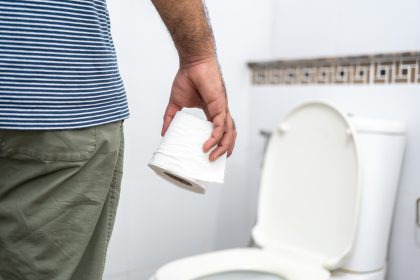Leaving pee in the toilet might seem like a trivial act, but it can have various implications, ranging from hygiene concerns to environmental impacts. While it might not be a common topic of discussion, understanding the reasons and consequences behind this behavior can shed light on broader issues of health, cleanliness and sustainability. This article delves into the different meanings and implications of leaving urine in the toilet, offering insights into personal habits, societal norms and environmental considerations.
Hygiene and health concerns
Impact on hygiene
One of the most immediate concerns with leaving pee in the toilet is hygiene. Urine, although mostly sterile when first expelled, can become a breeding ground for bacteria if left standing for too long. This can lead to unpleasant odors and the potential for bacterial growth, which might pose a health risk in communal or shared bathrooms. Proper flushing ensures that these risks are minimized, maintaining a cleaner and healthier environment for everyone.
Health implications
While urine itself is not typically harmful, the habit of not flushing can indicate broader health or behavioral issues. For instance, someone who frequently forgets to flush might be experiencing cognitive or memory problems. Additionally, persistent neglect of bathroom hygiene can be a sign of depression or other mental health conditions, where self-care routines are often disrupted.
Environmental considerations
Water conservation
On the flip side, there are environmental arguments in favor of leaving pee in the toilet occasionally. The phrase “if it’s yellow, let it mellow” advocates for reducing water usage by not flushing every time. Considering that standard toilets use between 1.6 to 7 gallons of water per flush, the environmental impact can be significant. By not flushing urine every time, households can conserve a substantial amount of water, contributing to sustainability efforts.
Eco-friendly practices
Implementing a water-saving strategy like the “yellow, let it mellow” approach can be particularly beneficial in areas experiencing drought or water shortages. However, it’s essential to balance water conservation with hygiene practices. Ensuring that toilets are cleaned regularly and that urine is not left standing for extended periods can help maintain cleanliness while also being mindful of water usage.
Social and cultural perspectives
Societal norms and etiquette
Leaving pee in the toilet can sometimes be perceived as a breach of social etiquette. In many cultures, the act of flushing after every use is ingrained as a basic standard of cleanliness and respect for others. Failing to do so might be viewed as inconsiderate or neglectful, particularly in shared or public restrooms. Understanding and respecting these societal norms is crucial in maintaining harmonious communal living spaces.
Behavioral insights
Examining why individuals might leave pee in the toilet can provide insights into their behavior and lifestyle. For some, it might be a matter of convenience or forgetfulness. For others, it might reflect a conscious choice rooted in environmental consciousness. Understanding the motivations behind this behavior can help in addressing any underlying issues, whether they are related to health, environment or social interactions.
Practical solutions and recommendations
Balancing hygiene and sustainability
Finding a balance between maintaining hygiene and conserving water is key. One practical solution is to adopt dual-flush toilets, which offer a low-water option for liquid waste and a higher-water option for solid waste. This allows for reduced water usage without compromising on cleanliness. Additionally, regular cleaning and maintenance of the bathroom can ensure that hygiene standards are upheld even when pee is occasionally left in the toilet.
Raising awareness and education
Educating individuals about the environmental benefits of water conservation and the importance of maintaining hygiene can help shift behaviors in a positive direction. Campaigns and initiatives that promote sustainable bathroom practices, such as the proper use of dual-flush systems or the occasional “let it mellow” approach, can contribute to broader environmental efforts while also ensuring that hygiene is not compromised.
Adapting to different environments
It’s important to adapt bathroom practices to the specific context and environment. In private homes, individuals have more control over their bathroom habits and can choose to implement water-saving strategies. In public or shared restrooms, however, adhering to strict hygiene practices is essential to ensure a clean and pleasant experience for all users. Understanding the appropriate behavior for different settings can help individuals navigate this issue effectively.
Rethinking leaving pee in the toilet
Leaving pee in the toilet might seem like a minor issue, but it carries a range of implications for hygiene, health, environmental sustainability and social etiquette. By understanding the reasons behind this behavior and implementing practical solutions, individuals can make informed choices that balance cleanliness with conservation. Whether motivated by environmental concerns or simply personal habits, it’s crucial to consider the broader impact of our bathroom practices and strive for a harmonious balance between hygiene and sustainability.
This story was created using AI technology.
















